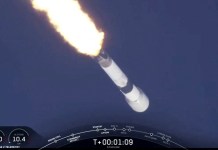The British Royal Air Force (RAF) lost six out of eight of its fighters that had taken part in an air combat training exercise on February 8, 1956, setting the dubious record for the most number of aircraft lost in one peacetime sortie.
The Hawker Hunter was a transonic jet developed during the late 1940s and early 1950s by a British Aircraft Manufacturer, Hawker Aircraft. It was behind some of the most popular jets in British Aviation history before it ceased operations in 1963.
Powered by the Rolls-Royce Avon 113 engine, Hunter F.Mk 1 was plagued by engine flameouts, and its low internal fuel capacity restricted its endurance to only about an hour.
The Central Fighter Establishment was stationed in a former RAF base located 3.2 kilometers west of West Raynham, Norfolk. The eight Hunter jets were to participate in a routine four-versus-four aerial combat exercise around 45,000 feet above the airfield.
At 0830 hours on the morning of February 8, 1956, weather conditions were considered unfit for exercise. However, the meteorological forecast suggested that the weather would eventually improve.
A pilot also conducted a special weather reconnaissance flight in a Hunter aircraft at 0930 hours. It confirmed that the weather had improved sufficiently for the exercise, based on which it was decided that the exercise should be undertaken.
Since the Ground Control Approach (GCA) bad weather landing aid at West Raynham (GCA involves the air-traffic controllers guiding the aircraft to a safe landing) was unserviceable, it was decided that the RAF Marham and former RAF air base at Waterbeach be given as diversion airfields to the flight leader if the need arose.
The Combat Exercise Began
At 1050 hours, these eight Hunter fighter jets started taking off from RAF West Raynham, with two of the jets flown by instructor pilots while student pilots piloted the remaining six.
Bad weather procedure was in force from the outset of the exercise, and before the flight, pilots had been briefed to return overhead West Raynham at 20,000 feet by 1115 hours. This time frame accounted for the aircraft’s endurance, allowing sufficient time for a controlled descent to be completed by 1130 at the diversion airfields.
The pilots completed their maneuvers in about 20 minutes of flying after having taken off from RAF West Raynham, and their Hunters began to run low on fuel, meaning it was time for them to return to their base.
While at West Raynham, the weather had already deteriorated by 1100 hours, so it was decided that at the end of the exercise, pilots must be diverted to Marham, approximately 32.18 kilometers south.
The pilots returned 20,000 ft overhead West Raynham as per their flight instructions just after 1110 hours, and their jets had sufficient fuel left for around 20 minutes of flying.
When they began to descend from this altitude under the control of West Raynham toward Marham, the weather was still suitable for visual circuits and landings at Marham.

A Sudden Deterioration In Weather
By the time they reached above Marham, the Hunters were running critically low, and worsening the matter, the weather at Marham had deteriorated with cloud and fog sweeping into Norfolk from the North Sea, and that drastically reduced the visibility.
A sudden change in weather happened just when the descent and handover of ground control from West Raynham to Marham was in progress.
This rapid weather change warranted the Hunters to be brought under the Ground Control Approach (GCA). Still, it was too late, as the pilots had come very close by then, down to around 2 000 feet, and had committed to visual landings, as a result of which they also formed up in pairs separated by a 30-second interval.
There was no time or fuel left to bring the aircraft under GCA. Due to the close spacing between the Hunters, it was impossible to identify each fighter individually and establish effective GCA control.

The weather conditions at this stage at Marham were cloud base 600 feet – altitude of the lowest part of a general mass of clouds – with visibility up to around 731 to 914 meters in slight rain and fog and deteriorating.
The first pair of Hunters made it through the clouds only to find fog after that and quickly lost sight of each other. The lead jet overshot the runway – went beyond the runway – while his wingman landed safely. In contrast, the lead had to perform three more circuits before touching down safely.
However, the next two Hunters were not so fortunate. The pilot of one Hunter had difficulty finding the runway through the fog before he finally decided to climb and then eject.
While the pilot of the fourth Hunter continued his approach to the runway, his jet crashed in a field close to the airstrip leading to his tragic death.

Of the next pair of Hunters, one was left with the last few gallons of fuel in its tanks, and following an aborted approach, the pilot also decided to eject.
While his wingman made a low approach, he spotted trees in his path and was forced to pull up, after which he performed another circuit around the airfield at 150 feet and was on the approach just before his Hunter’s engine failed.
The fighter ultimately overshot the runway and crash-landed on the underside of his fuselage without the landing gear.
In the chaos that followed, the pilots of the remaining fuel-starved Hunters aborted their approaches and then ejected quickly at somewhere between 4,000 feet and 2,500 feet.
The four ejected pilots suffered no major injuries.
Findings Of The Court Of Inquiry
In April 1956, the ‘Court of Inquiry’ that had investigated this incident made its findings public. It concluded that the primary cause behind the accident was the sudden deterioration in the weather.
The Court also said that it was an error of judgment on the part of the Control staff at West Raynham to divert the aircraft to Marham for visual landing, as they failed to take into account the proximity between the two airfields, because of which any deterioration in the weather at West Raynham would likely affect Marham shortly afterward.
After a review of all the facts, the Air Officer Commanding-in-Chief, RAF Fighter Command, decided to take disciplinary action against the officers responsible for the Control of Flying at West Raynham at the time.
One officer was removed from his position, and three others were disciplined.
According to the Guinness Book Of World Records, this incident marked the largest number of fighter aircraft lost in a single peacetime sortie.
- Contact the author at tanmaykadam700@gmail.com
- Follow EurAsian Times on Google News




